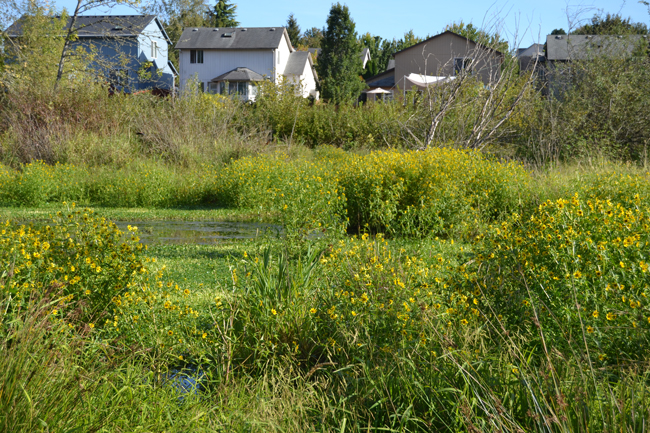During my life I’ve had the good fortune to have worked on a broad range of conservation issues—canvassing to stop a dam on Nebraska’s Niobrara River when I was a teenager; seeking to limit the impact of off-road vehicles on national forests; participating in large landscapescale conservation of old-growth forests in the Sierra Nevada; and working to protect and conserve habitat for many rare and declining species, including spotted owls, wolves, and a wide variety of invertebrates.
Although the prospect of grappling with such problems can be daunting, the best solutions often entail place-based conservation efforts, focused on protecting landscapes and wildlife that hold particular significance for a region or community. Inspiring and empowering individuals to take action in their own immediate community, perhaps even just in their own backyards, can be the best way to effect lasting change, and we at the Xerces Society have long held this as a goal.
In our fall 2017 issue of Wings Magazine, Xerces staff members provided essays that focus on urban and suburban areas: how actions in your own yard have wider impacts; the many ways in which people can effect change either as individuals or by banding together with their neighbors; and the natural history of a suburban garden. We hope you will find inspiration in these stories to help you protect the small creatures in your own community.

I am also very excited to share with you the news that we are expanding our efforts to promote invertebrate conservation in towns and cities. The Xerces Society manages the largest invertebrate conservation program in the world, and over the years we have worked extensively with farmers, ranchers, and the managers of public lands and wild areas. We’ve also worked with park managers and golf course superintendents to incorporate habitat into the urban landscapes in their domain, but, despite the obvious enthusiasm and demand, we haven’t had a focused program that allows us to provide ongoing support to urban and suburban communities.
The fate of bees has captured the attention of many people, and this concern has translated into tremendous momentum to restore the health of pollinators and other beneficial insects. But a recent study published online in Frontiers in Ecology and the Environment shows that the conservation community has more work to do. Joseph Wilson, Matthew Forister, and Olivia Messinger Carril undertook a survey to assess public understanding of bees. While 99 percent of respondents knew that bees are ecologically important, the great majority estimated that there are a few dozen bee species in the United States, a tiny fraction of the thirty-six hundred species that are actually here. Furthermore, more than a quarter of the respondents who chose to take the survey could not tell a bee from a fly. You don’t need to be an entomologist to help pollinators, but there is clearly more that we can do to offer people a better understanding of the natural history of bees and butterflies, and thus to make sure that they have the knowledge to help them support these important animals.
Urban and suburban areas are important for invertebrate conservation. Research shows that urban greenspaces can provide valuable habitat for invertebrates. Not only do studies suggest that more biodiversity is maintained in some developed areas than in farmed landscapes, but densely populated areas can mean that there are many people keen to do something to help. From parks and campuses with significant acreage to small yards and gardens, providing flowers and nesting sites has been shown to increase both the diversity and the abundance of invertebrates in built environments. In urban areas, with their many impervious surfaces, it is also important to limit pesticide use, because these chemicals find their way into local streams and harm aquatic life.
Across the country and around the world, people are increasingly troubled by the loss of bees, butterflies, and other pollinating insects. The Xerces Society is uniquely positioned to partner with communities in creating urban and suburban havens for dwindling invertebrate populations. If we all work together we can make the world a better place—wherever we live.



